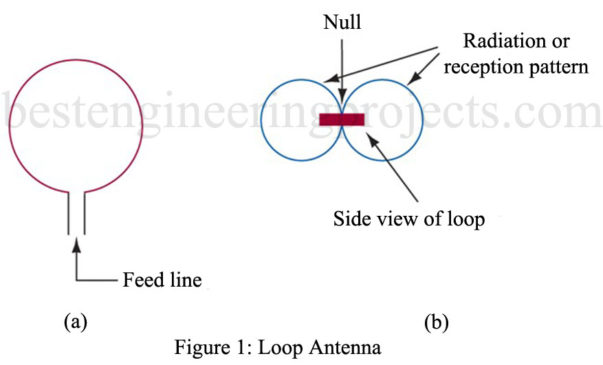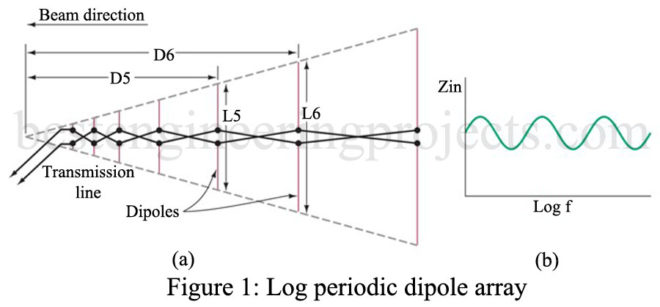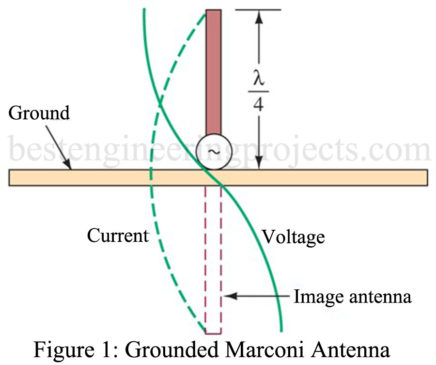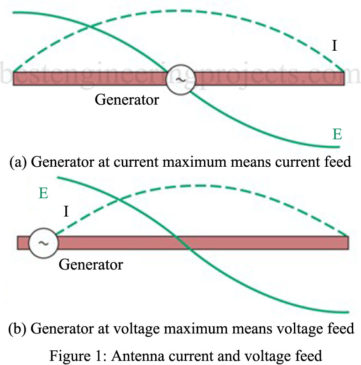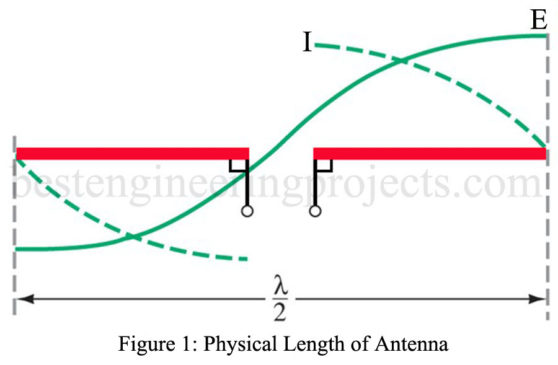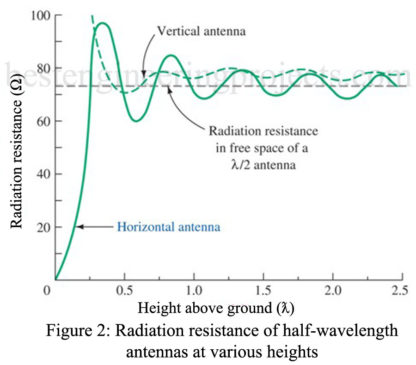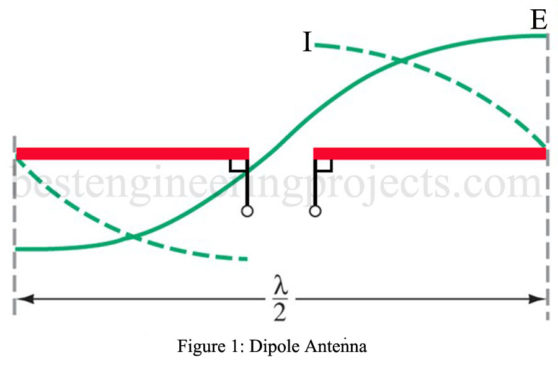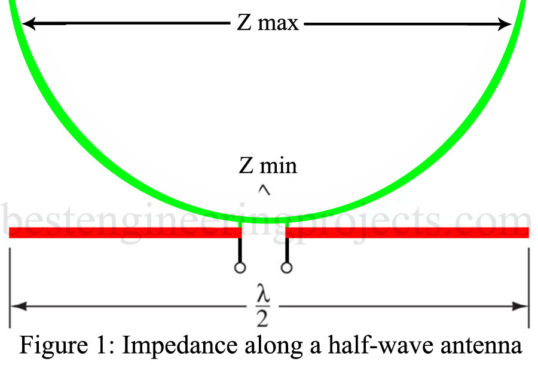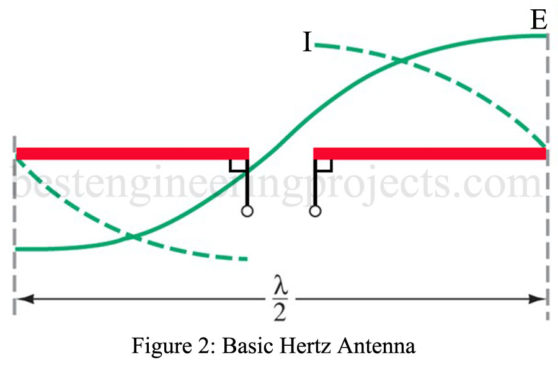Loop Antenna A loop antenna is a single turn of wire whose dimensions are normally much smaller than a wavelength. When this condition exists, the current in it may all be considered in phase. This results in a magnetic field that is everywhere perpendicular to the loop. The resulting radiation pattern is sharply bidirectional, as indicated in Figure 1, and is effective over an extremely wide range of frequencies—those for which its diameter is about or less. The antenna is usually circular, but any shape is effective. Because of its…
Read MoreLog Periodic Antenna
The log-periodic antenna is a special case of a driven array. It was first developed in 1957 and has proven so desirable that its many variations now make up an entire class of antennas. It provides reasonably good gain over an extremely wide range of frequencies. It is, therefore, useful for multiband transceiver operation and as a TV receiving unit to cover the entire VHF and UHF bands. It can be termed a wide-bandwidth or broad-band antenna. Bandwidth is not to be confused with beamwidth in this situation. Check out…
Read MoreAntenna Arrays | Yagi-Uda Antenna
Hertz Antenna with Parasitic Element | Antenna Arrays The most elementary antenna arrays are shown in Figure 1. It consists of a simple Hertz half-wave dipole and a non-driven (not electrically connected) half-wave element located a quarter wavelength behind the dipole. The non-driven element is also termed a parasitic element since it is not electrically connected. The dipole radiates electromagnetic waves with the usual bidirectional pattern. However, the energy traveling toward the parasitic element, upon reaching it, induces voltages and currents but incurs a 180° phase shift in the process.…
Read MoreMarconi Antenna | Counterpoise and Radiation Pattern
The Marconi antenna is used primarily with frequencies below 2 MHz. The difference between the Marconi antenna and the Hertz antenna is that the Marconi type requires a conducting path to the ground, and the Hertz type does not. The Marconi antenna is usually a quarter-wave grounded antenna or any odd multiple of a quarter wavelength. Effects of Ground Reflection in Marconi Antenna A Marconi antenna used as a transmitting element is shown in Figure 1. The transmitter is connected between the antenna and the ground. The actual length of…
Read MoreTypes of Antenna Feed Lines
Antenna Feed Lines: If energy is applied at the geometrical center of an antenna, the antenna is said to be center-fed. If energy is applied to the end of an antenna, it is known as an end-fed antenna. Although energy may be fed to an antenna in various ways, most antennas are either voltage fed or current-fed. When energy is applied to the antenna at a point of high circulating current, the antenna is current-fed. When the generator energy is applied to a point of high voltage on the antenna,…
Read MorePhysical Length of Antenna
What is the physical length of antenna? If an antenna is constructed of very thin wire and is isolated in space, its electrical length corresponds closely to its physical length of antenna. In practice, however, an antenna is never isolated completely from surrounding objects. For example, the antenna will be supported by insulators with a dielectric constant greater than 1. The dielectric constant of air is arbitrarily assigned a numerical value equal to 1. Therefore, the velocity of a wave along a conductor is always slightly less than the velocity…
Read MoreAntenna Radiation Resistance
The portion of an antenna’s input impedance that is the result of power radiated into space is called the antenna radiation resistance, Rr. It should be noted that R, is not the resistance of the conductors that form the antenna. It is simply an effective resistance that is related to the power radiated by the antenna. Since a relationship exists between the power radiated by the antenna and the antenna current, radiation resistance can be mathematically defined as the ratio of total power radiated to the square of the effective…
Read MoreHow to Calculate Dipole Antenna Gain
The hertz antenna is also called a dipole antenna. The Hertz antenna has gain concerning the theoretical isotropic radiator. Dipole Antenna gain is different from amplifier gain since feeding 50 W into a dipole does not result in more than 50 W of radiated field energy. It is, instead, a gain relative to a reference antenna. The dipole, therefore, has a gain relative to the isotropic radiator in a certain direction. The Hertz antenna has a 2.15-dB gain (at right angles to the antenna) as compared to an isotropic radiator.…
Read MoreHertz Antenna Impedance
A Hertz Antenna Impedance value may be specified for a half-wave antenna thus constructed. Generally, the impedance at the ends is maximum, while that at the input is minimal. Consequently, the impedance value varies from a minimum value at the generator to a maximum value at the open ends. An impedance curve for the half-wave antenna is shown in Figure 1. Notice that the line has different impedance values for different points along its length. The impedance values for half-wave antennas vary from about at the open ends to at…
Read MoreHertz Antenna Fundamental and Development
Any antenna having a physical length that is the one-half wavelength of the applied frequency is called a Hertz antenna. Hertz antennas are predominately used with frequencies above 2 MHz. It is unlikely that a Hertz antenna will be found in applications below 2 MHz because at these low frequencies this antenna is physically too large. Usually, at frequencies below 2 MHz, a Marconi type of antenna is used. This is a quarter-wavelength antenna with the ground reflection acting as the other quarter wavelength. Development of the Hertz Antenna When…
Read More